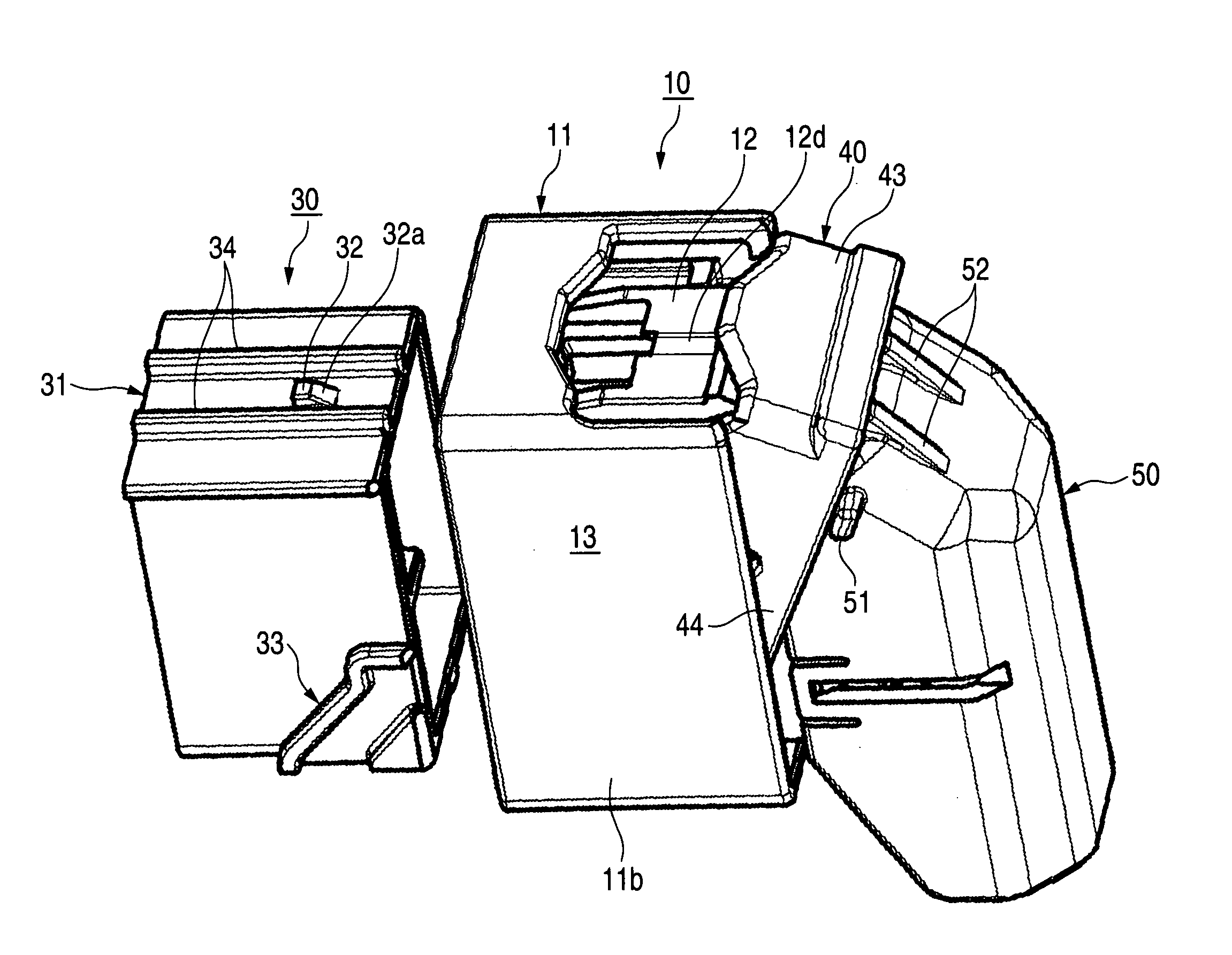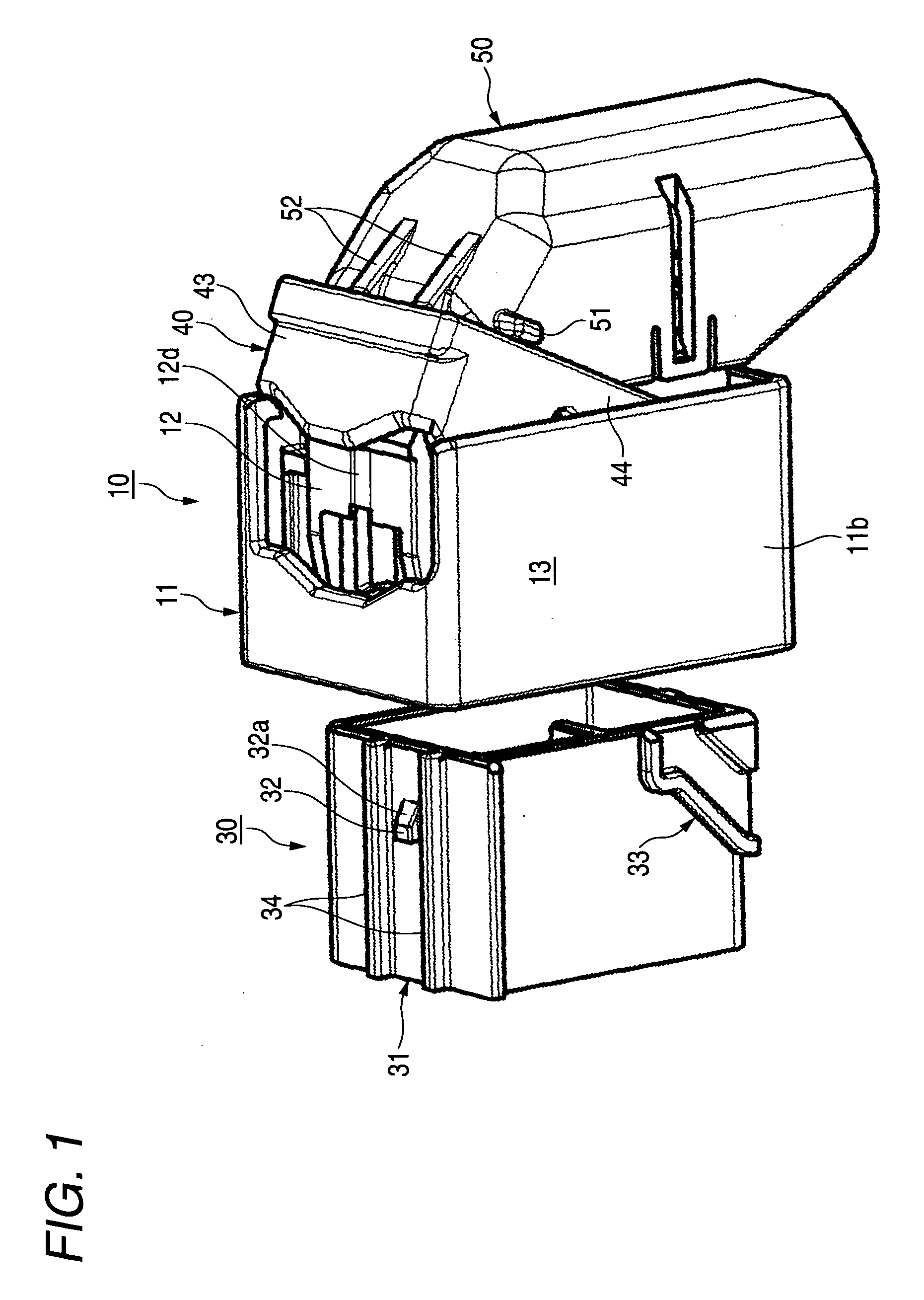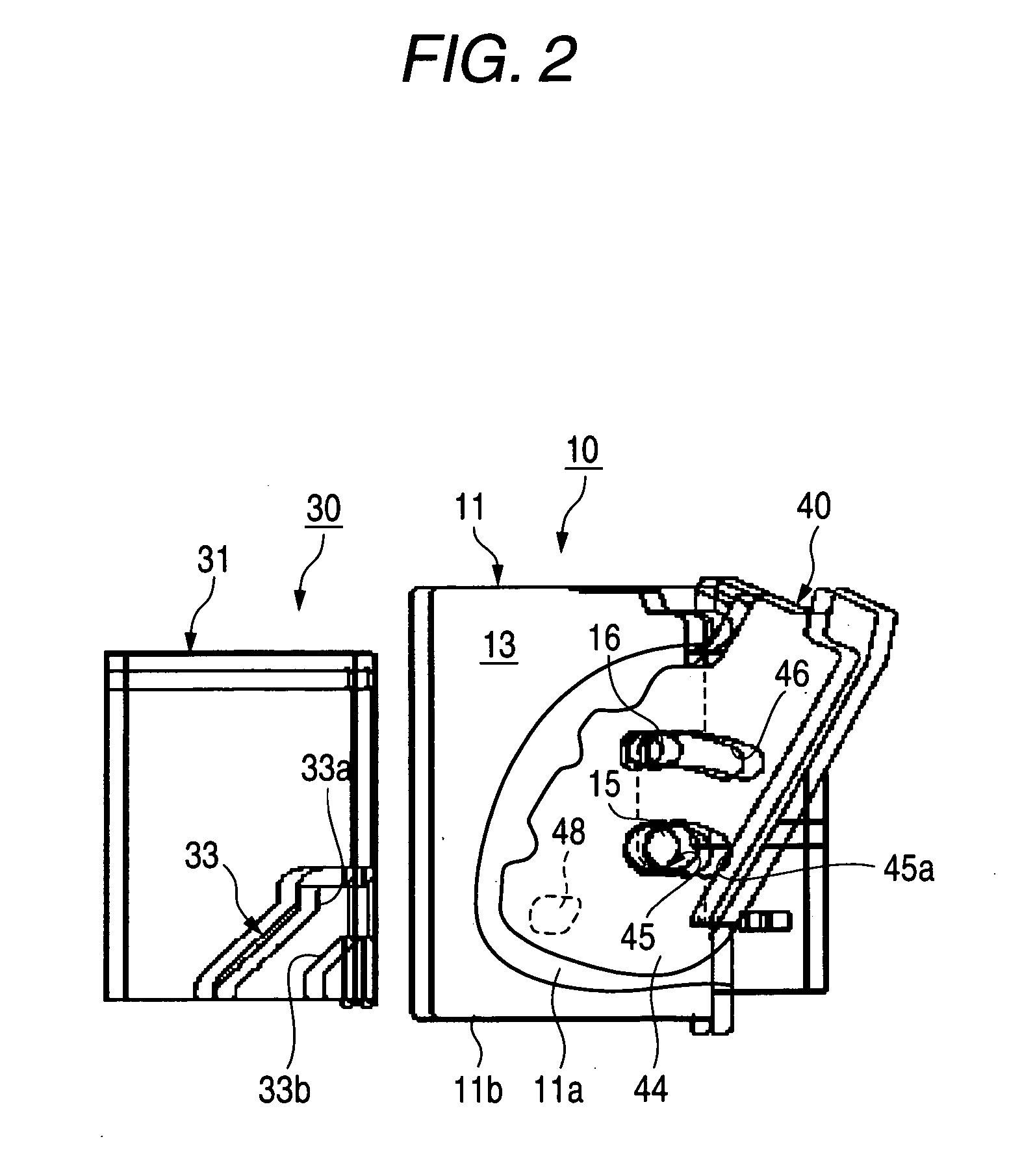Connector fitting structure
a technology of connecting parts and fittings, applied in the direction of coupling device connection, engagement/disengagement of coupling parts, electrical apparatus, etc., can solve the problems of difficult pivotal movement of levers, not smoothly moving within, and not smoothly in a stable manner, so as to reduce the cost, operate smoothly, and reduce the force required for operating levers
- Summary
- Abstract
- Description
- Claims
- Application Information
AI Technical Summary
Benefits of technology
Problems solved by technology
Method used
Image
Examples
Embodiment Construction
[0057] A preferred embodiment of the present invention will now be described with reference to the drawings.
[0058]FIG. 1 is a perspective view of one preferred embodiment of a connector fitting structure of the invention, showing a condition before a male connector is fitted in a female connector, FIG. 2 is a side-elevational view of the connector fitting structure of FIG. 1, with a cover removed and also with an outer housing of the female connector partly broken, FIG. 3 is a cross-sectional view of the connector fitting structure of FIG. 1, showing a cut surface where a lock arm of the female connector can be seen, and FIG. 4 is a cross-sectional view of the connector fitting structure of FIG. 1, showing a cut surface where a lock cancellation arm of a lever can be seen.
[0059]FIG. 5 is a perspective view of the connecting fitting structure of this embodiment, showing an initial stage of the fitting of the male connector into the female connector. FIGS. 6 and 7 are side-elevation...
PUM
 Login to View More
Login to View More Abstract
Description
Claims
Application Information
 Login to View More
Login to View More - R&D
- Intellectual Property
- Life Sciences
- Materials
- Tech Scout
- Unparalleled Data Quality
- Higher Quality Content
- 60% Fewer Hallucinations
Browse by: Latest US Patents, China's latest patents, Technical Efficacy Thesaurus, Application Domain, Technology Topic, Popular Technical Reports.
© 2025 PatSnap. All rights reserved.Legal|Privacy policy|Modern Slavery Act Transparency Statement|Sitemap|About US| Contact US: help@patsnap.com



